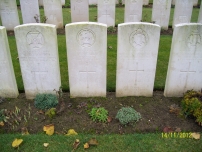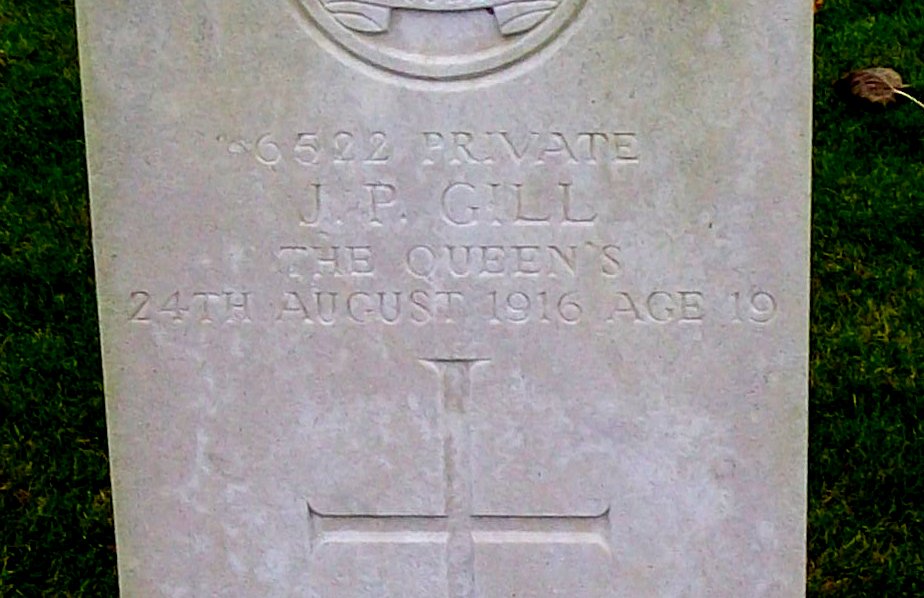| First Name: | John Patrick | Last Name: | GILL | |
|---|---|---|---|---|
| Date of Death: | 24/08/1916 | Lived/Born In: | Bow | |
| Rank: | Private | Unit: | Royal West Surrey (Queens)1 | |
| Memorial Site: | ||||
Current Information:Age-19 268, Devons Road, Bromley-by-Bow Dernancourt Communal Cemetery, Somme
The Battle of the Somme (July-November, 1916) By the beginning of August the Battle of the Somme had been raging for a full month. Thousands of men had already been killed or wounded or were simply missing, never to be seen again and and just a few square miles of the French countryside, all in the southern part of the battlefield, had been captured from the enemy. Mistakes had been made by the various commanders and would be continued to be made but there was no turning back as the British, Australians, South Africans, New Zealanders and Canadians carried on battering away at the German defences in the hope of a breakthrough, So it continued all the way through to November with nearly every battalion and division then in France being drawn into it at some stage. In the end the German trenches had been pushed back a few more miles along most of the line but the cost in lives had been staggering. By the end of the fighting in November, 1916, British Army casualties numbered over 400,000, killed, wounded and missing. On 22nd August, 1916, 1st Royal West Surrey (Queens) of 100 Brigade, 33rd Division, moved up to the front line trenches to the west of Delville Wood and two days later on 24th August, they took part in an attack with 16th King’s Royal Rifle Corps and 2nd Worcestershire, both also from 100 Brigade, on the enemy positions between Wood Lane and the Flers road. They were shelled whilst waiting in their assembly position, which did not help the cause, but at 5.45pm and after an artillery bombardment of the German trenches, ‘D’ and ‘C’ Companies moved forward in what was, by the standards of the time, a successful attack. Part of the explanation for this was a smoke screen put up on their left which effectively prevented any flanking fire from that quarter and that the troops had followed close behind the barrage which allowed them to get into the German trenches without meeting too much resistance. From here they bombed there way up Wood Lane and secured the junction with Tea Trench. This was consolidated and counter attacks were beaten off. John Gill died of wounds on 24th August and he may have been wounded on an earlier date. |
||||
Other Photos: |
||||
| « Back to Search Results | ||||
| If you think any of the information shown here is incorrect, Click Here to submit your amends and comments | ||||





